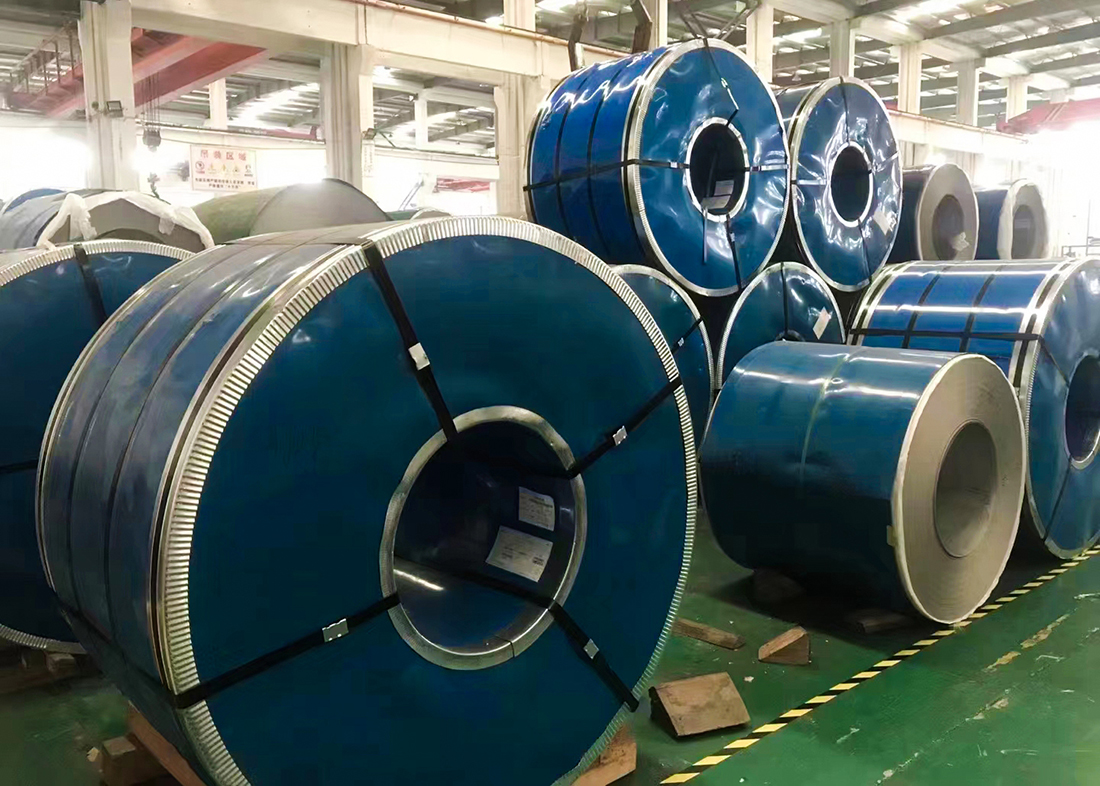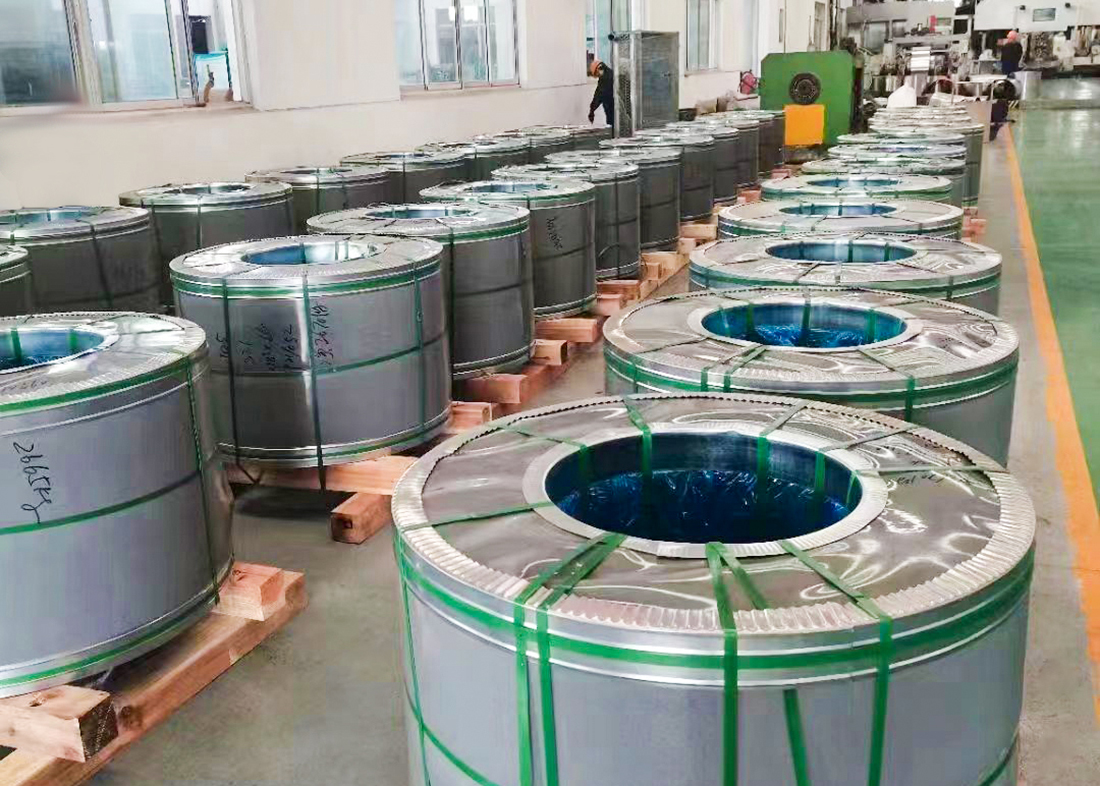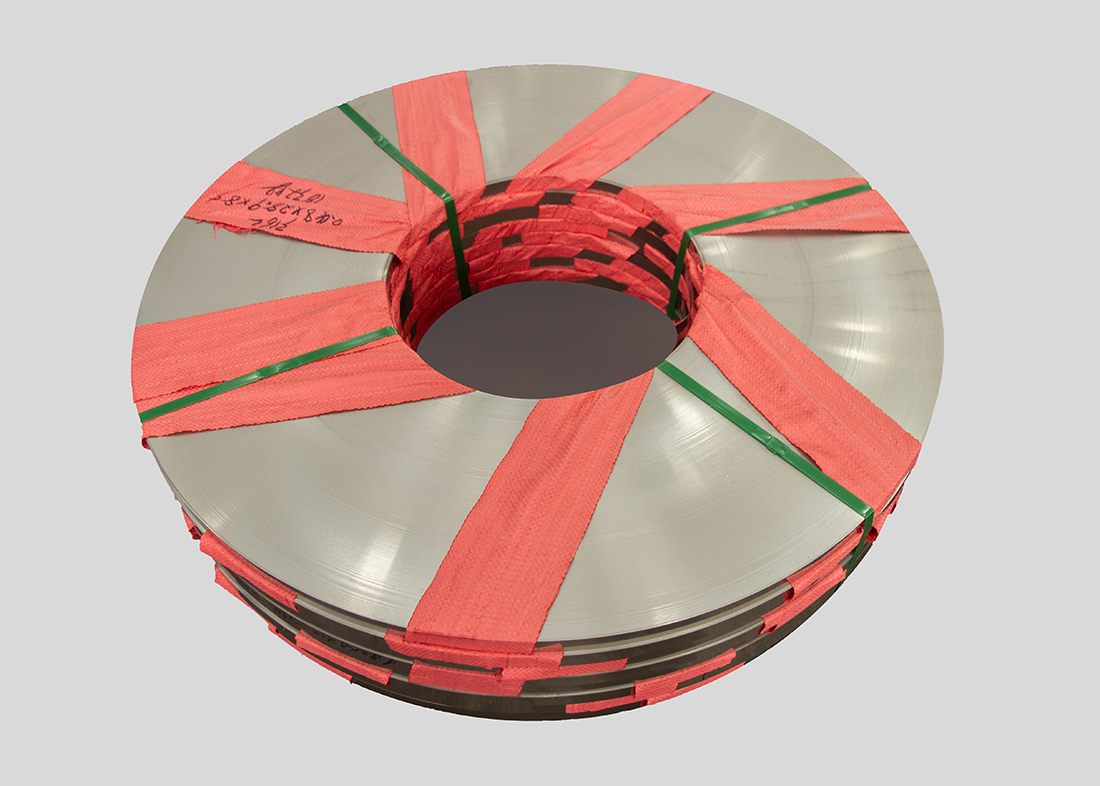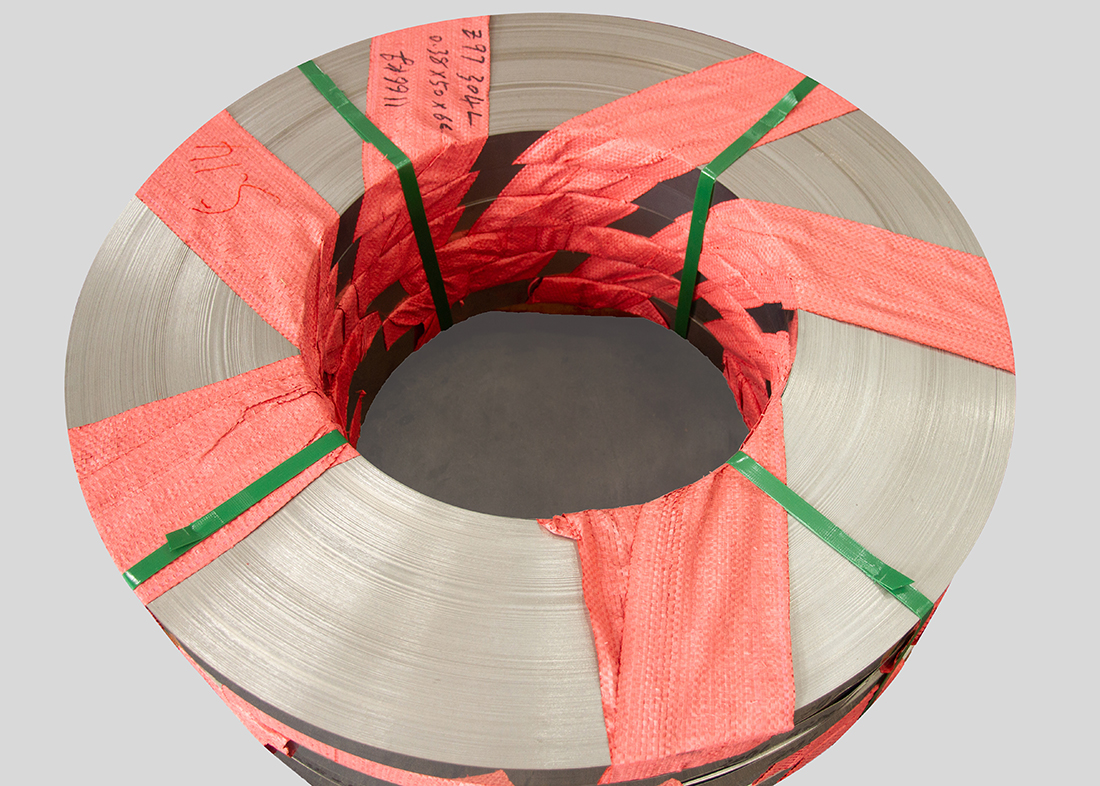
What is the cold rolling process for stainless steel coils
source:goldinn.cn | Release time:2025年04月08日1. Process flow
Raw material preparation: Select hot-rolled stainless steel coils as cold rolling raw materials. Hot rolled coils need to be inspected to ensure that their chemical composition, dimensional accuracy, and surface quality meet the requirements of the cold rolling process.
Uncoiling: Place the stainless steel hot-rolled coil on the uncoiler, unfold the steel strip through the rotation of the uncoiler, and apply a certain tension to the steel strip to ensure its stability during subsequent processing.
Acid washing: The purpose of acid washing is to remove the oxide scale and impurities on the surface of the steel strip. Usually, sulfuric acid, hydrochloric acid and other acid solutions are used to soak and clean the steel strip, causing the oxide scale to react chemically with the acid and dissolve, thereby exposing a clean metal surface. The pickled steel strip needs to be washed and dried to remove residual acid and moisture on the surface.
Cold rolling: This is the core process, and the pickled steel strip enters the cold rolling mill for rolling. Cold rolling mills are usually composed of multiple rolling rolls, which apply pressure to the steel strip through the rolling rolls, gradually reducing its thickness. During the rolling process, it is necessary to correctly control parameters such as roll speed, reduction amount, tension, etc. to ensure the thickness accuracy and shape quality of the steel strip. In order to reduce the rolling force and improve the surface quality of the steel strip, rolling oil is also sprayed onto the surface of the steel strip during the rolling process to lubricate and cool it.
Annealing: After cold rolling, there are significant residual stresses inside the stainless steel coil, and the microstructure has also changed. Annealing treatment can eliminate residual stresses, restore the toughness and plasticity of the material, improve its microstructure, and enhance the comprehensive performance of the material. Annealing is usually carried out in a heating furnace, and the appropriate annealing temperature and holding time are selected according to the material and performance requirements of stainless steel. The annealed steel strip needs to be rapidly cooled to obtain the desired microstructure.
Flattening: Flattening is the mild rolling of annealed steel strips, with the aim of further improving the surface flatness and smoothness of the steel strip, improving the shape of the plate, and giving the steel strip a certain yield strength and hardness to meet the requirements of different users. During the leveling process, it is also necessary to control parameters such as rolling force and tension.
Finishing: The finishing process includes trimming, slitting, cutting to length, etc. Trimming is the process of cutting off the irregular edges of a steel strip to ensure its width accuracy; Slitting is the process of cutting a wide steel strip into several narrow strips according to user requirements; Fixed length cutting is the process of cutting steel strips to a specified length to produce stainless steel plates or coils of different specifications.
Packaging: Stainless steel coils or plates that have been refined and packaged according to customer requirements. Generally, moisture-proof paper, plastic film and other materials are used for packaging to prevent the product from being damaged and corroded during transportation and storage.
2. Process characteristics
High product accuracy: It can correctly control the thickness, width, and shape of stainless steel coils, with thickness tolerances controlled within a small range. The flatness of the plate shape is high, meeting the needs of various high-precision application fields.
Good surface quality: During the cold rolling process, the surface of the steel strip is in close contact with the rolling mill. After multiple passes of rolling and surface treatment, a smooth and shiny surface can be obtained with low roughness and no obvious defects. It can be directly applied to occasions with high surface quality requirements without the need for extensive surface processing.
Excellent material properties: Through cold rolling and subsequent heat treatment processes, the microstructure of stainless steel can be made denser and more uniform, and its mechanical properties such as strength, hardness, and toughness can be significantly improved. At the same time, its special properties such as corrosion resistance and wear resistance can also be improved.
High production efficiency: The cold rolling process adopts a continuous production mode with fast production speed, which can achieve large-scale industrial production, improve production efficiency, and reduce production costs.
3. Application Fields
Cold rolled stainless steel coils are widely used in industries such as building decoration, automobile manufacturing, home appliances, electronics, medical equipment, etc. For example, decorative panels used for building curtain walls and roofs, structural components and interior parts of automobiles, shells and inner liners of household appliances, shells of electronic devices, surgical instruments and medical equipment shells in medical equipment, etc.
prev:
Why stainless steel belts are used in rail transit
next:
What is the sanding treatment of stainless steel …
【Related articles】
【Related products】
+
 WeChat ID:goldinn.cn
WeChat ID:goldinn.cn

 WeChat ID:goldinn.cn
WeChat ID:goldinn.cn











 Add WeChat
Add WeChat
 Contact us
Contact us
 The phone
The phone